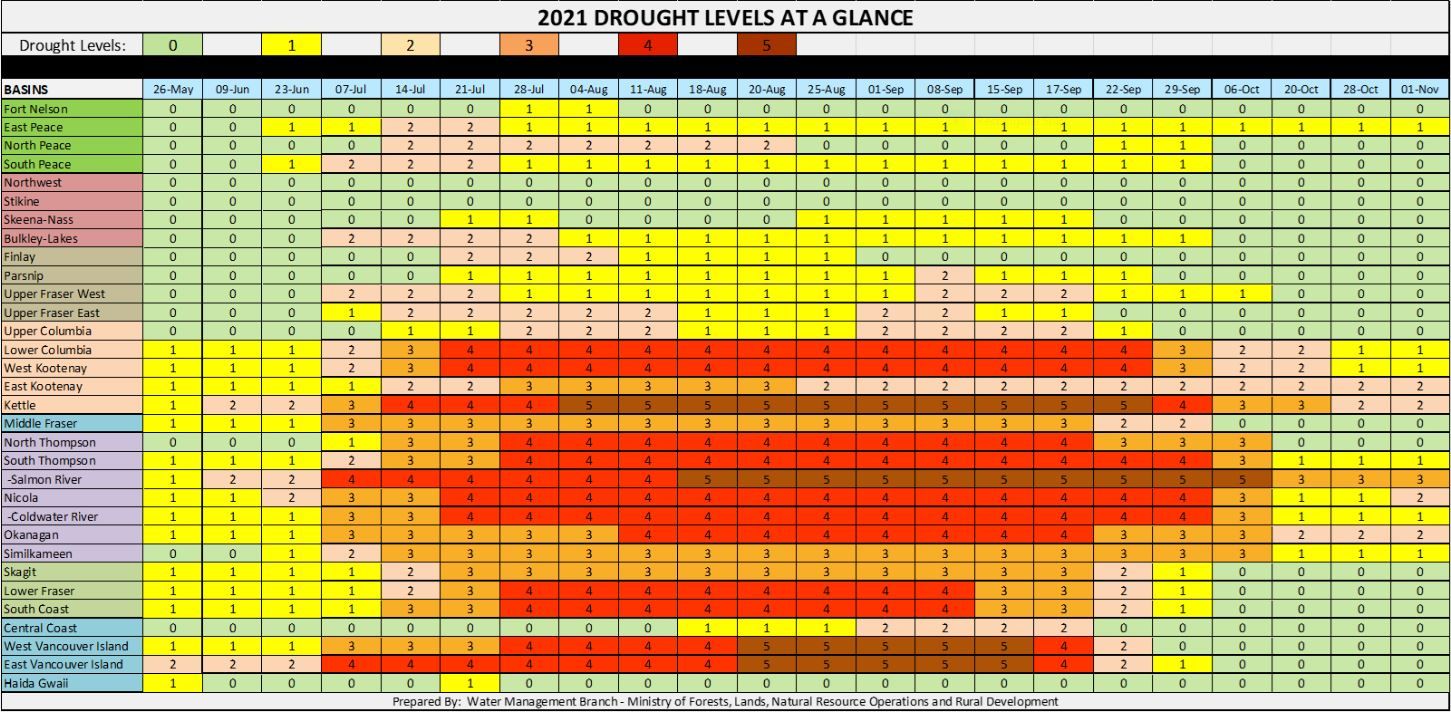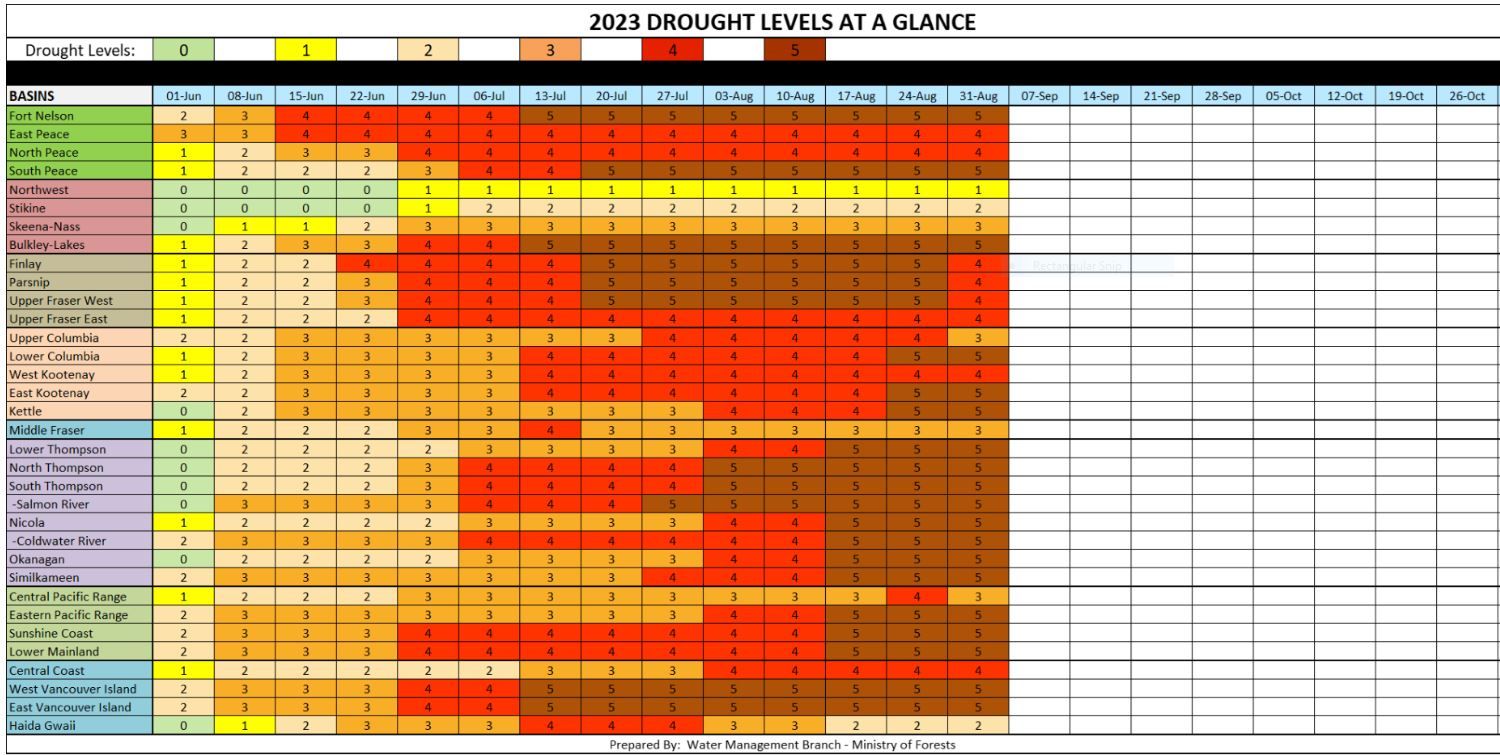Wildfires continue to burn across BC, but as temperatures start to dip in the fall the provincial government’s primary focus is shifting to the ongoing drought that has been ravaging the province.
“It is unlike any kind of drought conditions the province has ever faced. In my opinion, it truly is a sleeping giant of a natural disaster that we are challenged with,” Bowinn Ma, Minister of Emergency Management and Climate Readiness, said at a provincial conference this afternoon. “The impacts will be very, very real.”
Ma said there are three scenarios that could play out over the next handful of months:
- The best case scenario – “extended, gradual rain over long periods of time that gently recharge our reservoirs, stream systems, and ecosystems back to a healthy place,” Ma said.
- If there continues to be a lack of rain – she said “we could see an extended drought season that carries on into the next calendar year.”
- And if rain falls too quickly on the dry province “we may see storms and flooding not unlike, potentially, what we saw in 2021.”
The province also saw drought conditions in 2021 that lead up to the atmospheric river that flooded large areas in the lower mainland and caused several highway washouts. Those conditions, however, were nowhere near what 2023 has had in store.


“I don’t say these things to scare people,” Ma said, “but it is important for us to really understand how serious of a drought situation we are in.”
“So much of the province is under drought conditions, there are areas – especially in the interior – that don’t get rain that much in the fall months,” Jonathan Boyd, a BC River Forecast Centre Hydrologist, said. “The drought could linger into the freeze-up of winter and into the spring or summer of next year.”
Cliff Chapman, the BC Wildfire Service’s Director of Wildfire Operations, said cooling temperatures and shorter days are helping firefighters regain control of fires.
There are currently 132 fires burning in the Prince George Fire Centre.
Province wide, nearly 1-million more hectares have burned than the previous worst-ever fire year; 2,250,248 this year compared to 1,354,284 hectares in 2018.
Something going on in the Nechako Valley area you think people should know about?
Send us a news tip by emailing [email protected].





